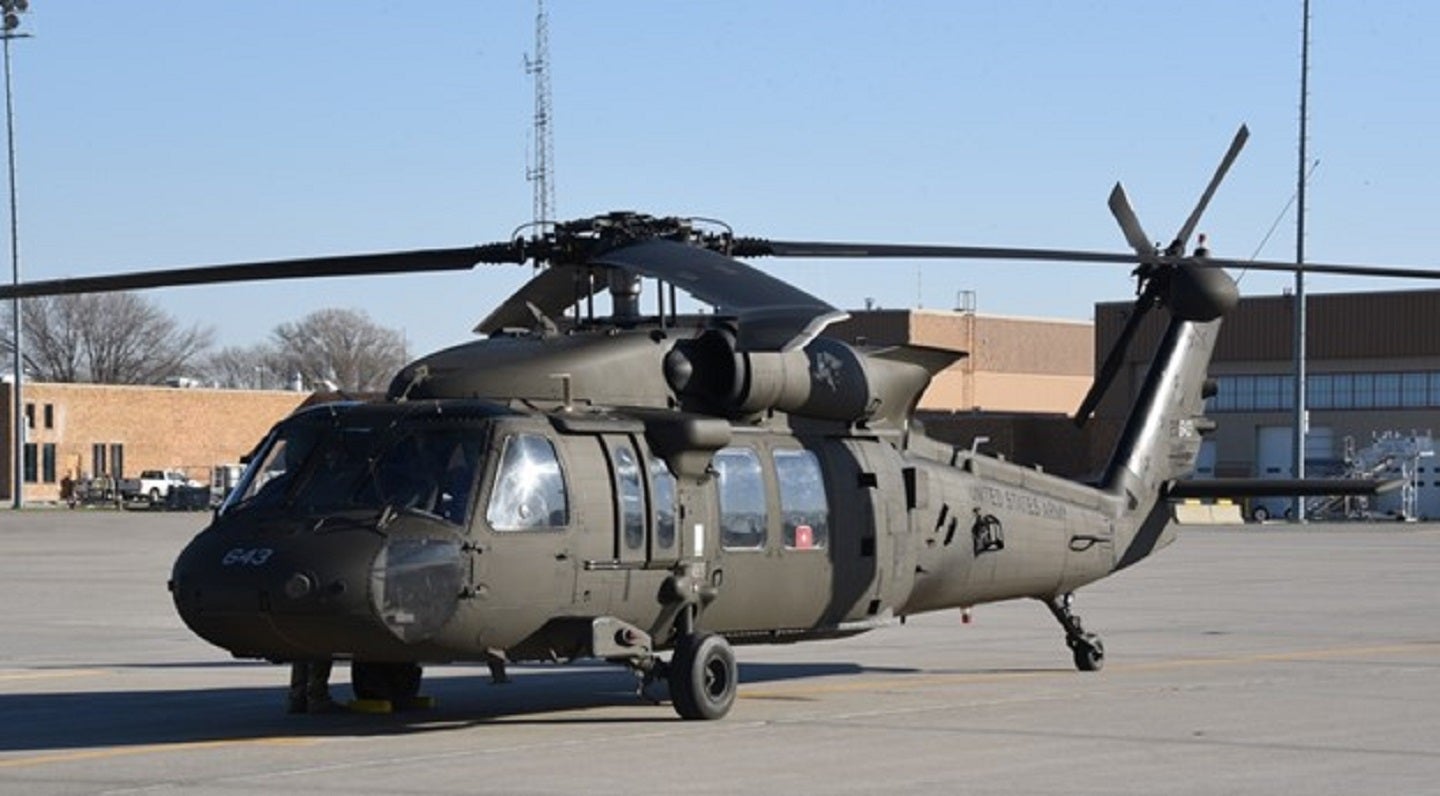
A US Army UH-60 Black Hawk assigned to the Iowa Army National Guard’s Army Aviation Support Facility from Boone, Iowa in Sioux City, Iowa, 13 April 2023. Credit: DVIDS.
Slovakia’s latest order for legacy Black Hawks from the United States will be postponed until 2026, possibly longer.
Airforce Technology learned of the delay and some of the nation’s plans for its rotary wing fleet during the Helicopter Technology Central and Eastern Europe conference, hosted by SAE Media, on 22 May in Prague, Czech Republic.
The Slovak Air Force currently operate nine Mi-17 helicopters which the government acquired in 2002 according to intelligence from GlobalData. The Russian-made platform comes in two versions: the M variant for conventional military operations, which comes in camouflage, as well as the search and rescue variant.
However, the focus of the nation’s rotary wing fleet is fixed on its growing number of multi-mission UH-60 Black Hawks.
Black Hawk delays
The service initially procured nine modernised M units in a US Foreign Military Sales agreement from April 2015. In January 2016, Slovakia’s first two pilots were sent to the US to complete the basic aircraft qualification course. All nine units arrived in Germany via ship between 2017 and 2020.
More recently, in December 2024, the Slovak government requested 12 second-hand UH-60L Black Hawks from the US, rejecting the AH-1Z helicopters that many anticipated they would procure.
Based on information from the last several days, it was found that the service will not reach full operational capability until 2026 at the earliest. Worse still, there is reason to believe that this may even extend to 2027.
The Slovak Air Force still need a common missile warning system (CMWS) and other systems across the legacy Black Hawks it has ordered from the United States. CMWS is a system designed to defend against surface-to-air infrared missile threats. It is a requirement for all helicopters, especially given the advanced threats in the battlespace, particularly brought about by the proliferation of uncrewed aerial systems in contested airspace.
Simulation training
The service have new plans for managing its fledgling Black Hawk ecosystem. The first concerns their flying training. Since Slovakia first purchased their UH-60Ms, its training was based in the US and at locations dotted among its continental neighbours.
In December 2023, the Slovak Air Force leveraged the US Army’s Illesheim Flight Simulator Complex in Germany, which, at the time, was said to be a 10-12 hour drive away from home.
However, since then, the Slovak Training Academy purchased its own trainers for its airbase in Košice.
Slovakia use the Cockpit Academics Procedural Tool- Enhanced Visual Control System (CAPTE-VCS), a low cost, high fidelity tactical emulation of the UH-60M. Alongside this, the Air Force also use the Collins Transportable Black Hawk Operations Simulator (T-BOS).
At present, Slovakia are also awaiting delivery of a full motion simulator, which is now under constriuction in the US, and will be delivered sometime in 2026.
Infrastructure plans
Slovakia keep all their helicopters with the 51st Wing in Prešov, the only helicopter base in the country. As its Black Hawk count grows, so too must the Air Force’s ability to keep them in service.
Besides the three existing hangars at Prešov, the government has also invested in a fourth hangar for additional support capacity for alomost all their extant Black Hawks. Construction of the last hangar began in 2023 and the facility is now up and running.
The force has also considered the mobility of the fleet as well by investing in portable hangars for the platforms or for basic maintenance.